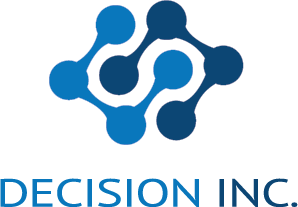BLOG | GENERATIVE AI
Framing The Risk Discussion for GenAI
In the rapidly evolving landscape of Generative Artificial Intelligence (GenAI), understanding and managing associated risks is crucial for enterprises. This article delves into three fundamental risk categories—Ethical, Accuracy, and Economic—outlining their nature and providing a structured approach for framing these discussions within an enterprise.
Ethical GenAI Risks
Nature of Risk: Ethical risks in GenAI encompass issues like bias, privacy violations, and misuse of technology. These risks can lead to reputational damage, legal challenges, and societal harm.
Framing the Discussion: Enterprises should agree on an ethical framework to guide discussions on risk management. The Australian AI Ethics Framework is an apt example, emphasizing human, social, and environmental well-being, respect for human rights, fairness, privacy protection, and accountability.

Action Points:
Establish an ethics committee or task force.
Regularly review and update the ethical framework to align with evolving societal values and legal standards.
Implement training programs on ethical AI use for employees.
Accuracy Risks of GenAI
Nature of Risk: This involves the potential inaccuracies in AI-generated outputs, leading to flawed decision-making or operational inefficiencies.
Framing the Discussion: Understanding the current processes and their inherent accuracy levels is essential. This should be followed by a gap analysis using emerging accuracy frameworks and Service Level Agreements (SLAs) to define acceptable accuracy levels.
Action Points:

Conduct a thorough analysis of existing processes and their accuracy.
Set clear accuracy benchmarks and review periods.
Develop a methodology for ongoing accuracy assessment and a process for remediation when discrepancies arise.
Economic Risks of GenAI
Nature of Risk: Economic risks relate to potential financial losses due to misunderstanding cost drivers and managing consumption risks in GenAI solution deployment.
Framing the Discussion: A clear understanding of the cost implications of GenAI solutions is crucial. This includes identifying hidden costs like data preparation, model training, and ongoing maintenance.
Action Points:
Conduct a comprehensive cost-benefit analysis before implementing GenAI solutions.
Monitor and manage ongoing costs, ensuring they align with budgetary constraints and deliver expected value.
Regularly review and adjust the GenAI strategy to prevent financial overruns.
Conclusion
Successfully integrating GenAI into enterprise operations requires a structured approach to risk management. By establishing clear frameworks for ethical, accuracy, and economic risks, organizations can ensure they are prepared to harness the benefits of GenAI while mitigating potential drawbacks. This proactive approach is essential for staying ahead in a world increasingly driven by AI innovations.
Read More
AI-driven solution enables deeper fan insights and automates qualitative feedback
Decision Inc. Australia's AI-driven solution enables deeper fan insights and automates qualitative feedbackSolution OverviewOne of Australia’s leading sporting organisations, comprising men’s, women’s, and e-sports competitions, is the peak body of one of the world’s...
Major Hospitality Group Customer Feedback Review Process Revitalised with Automation
Decision Inc. Australia Automates Customer Feedback Review Process and Leverages AI to Streamline Sentiment Analysis for Major Hospitality GroupSolution OverviewAn Australian hospitality group, which operates cinemas, hotels, restaurants and resorts across Australia,...
Watterson Intelligent Automation Case Study
Decision Inc. Australia Streamlines Media Analysis and Sentiment, Leveraging AI and Automation for WattersonSolution OverviewWatterson is a boutique public relations and marketing communications consultancy.New South Wales, AustraliaMedia &...



